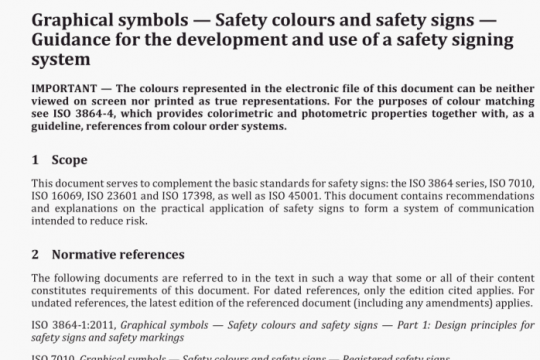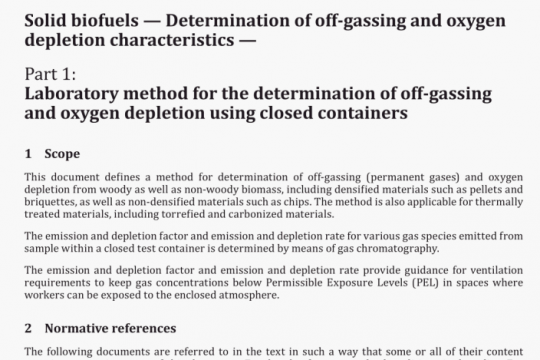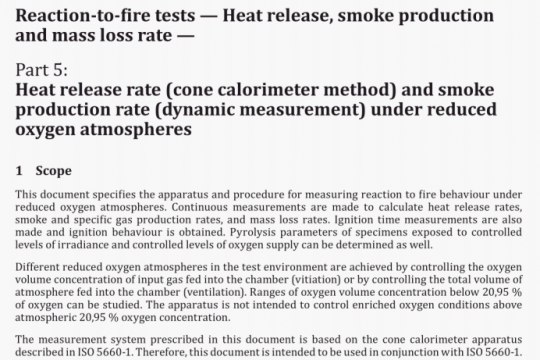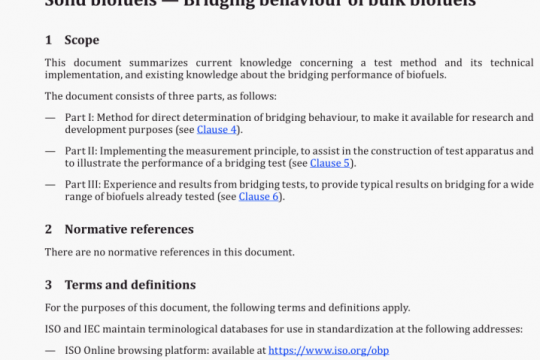ISO 728 pdf free download
ISO 728-2021 pdf free download.Coke一Size analysis by sieving.
7.2 Division ofcoke minus 22,4 mm
Divide the sample (minus 22,4 mm fraction from 71 e) to the required minimum mass in Table 1
means of a suitable mechanical sample divider or riffle avoiding size degradation and loss of dust. Alternatively, for division, use either the flattened heap method or the strip mixing method described in ISO 13909-6 and ISO 18283. Determine the mass ofall the coke not included as part ofthe test sample and retain it until all analyses and calculations are complete.
7.3 Sizing sample ofmaximum particle size between 22,4 and 4 mm — Manual method
a) Determine the mass (ofthe divided minus 22,4 mm fraction from 72) ofthe sample to the nearest 0,1 %.
b) Position the largest aperture size sieve in the set over an empty receiver or bin. Move the sieve horizontally to and fro, with the displacement not exceeding 100 mm in either direction, to cause the pieces ofcoke to tumble or roll on the sieve.
c) Continue the sieving motion until eight movements in each direction (a total of 16 movements) have taken place after the last undersize piece passes through the sieve. Avoid any impact when stopping the motion.
d) Place the coke remaining on the sieve in a tared receiver and determine the mass ofthe size fraction.
e) Sieve the undersize again by repeating the above process for each sieve down to and including the 4,0 mm aperture size sieve and redetermine the mass of each size fraction including the minus 4,0 mm fraction.
The mass ofthe minus 4,0 mm fraction from 73 e) may also be reduced in a similar fashion to 72 before proceeding to Z4.
7.4 Sizing sample ofparticle size less than 4,0 mm — Manual method
a) Determine the mass ofthe divided minus 4,0 mm fraction from L e)] to the nearest 0,1 %.
b) Place the smallest aperture size sieve in the set on a receiver or bin. Brush the sample onto the sieve, fit the lid and sieve continuously for a 5 mm (minute) period, as described in item c), to remove the undersize. Ifthe sample is large, sieve it as separate portions so that not more than 75 % ofthe area ofthe sieve is covered at the end ofeach sieving operation.
c) Hold the receiver, fitted with the sieve and its lid in the left hand so that the surface of the sieve is inclined downwards towards the left at an angle of about 300 to the horizontal. Tap the higher side of the sieve frame six to eight times with the hardwood block. While maintaining the inclination ofthe sieve, shake the assembly to and fro several times, also rotating it in the plane ofthe sieving surface through an angle ofapproximately 600.
d) Continue the operations oftapping and shaking alternately for a further S mm period.
e) At the end ofthe further 5 mm sieving period, allow the suspended fines to settle for 2 mm, carefully remove the lid and lift the sieve from the receiver or bin. Invert the sieve over a tray, tap the higher side ofthe sieve frame with the hardwood block, and then carefully brush the uppermost surface of the inverted sieve with the flat brush. Turn the sieve the right way up and add any loose particles dislodged during brushing to the oversize on the tray.
f) Invert the receiver over a second tray, tap the receiver with the hardwood block and brush out any adherent fines.
g) If there are any fines still visible in the oversize, replace the sieve on the receiver and transfer the oversize from the first tray to the sieve, replace the lid and re-sieve for a further 5 mm period. Separate the sieve and the receiver and again, clean the sieve. Add the fines to the material which passed through the sieve during the first and second 5 mm periods.
h) Assemble the appropriate sieves in a nest, in descending order ofaperture size, and fit a receiver or bin. Place the sample on the top sieve. Shake the nest ofsieves for a further 5 mm period.
i) At the end of the 5 mm period, clean each sieve in turn, starting with the smallest aperture size sieve, by inverting it over a tray, tapping the higher side ofthe sieve frame with the hardwood block and carefully brushing the uppermost surface of the inverted sieve with the flat brush. Turn the sieve the right way up and add any loose particles dislodged during the brushing to the oversize on the tray. Return the sieve to the nest and transfer the material on the tray back to the sieve.
j) Repeat the process described in above Items h) and i) twice, but after the final cleaning of the sieves transfer the material from the trays and determine the mass of each size fraction. Add the undersize obtained from the initial separation to that from the final sieving before weighing.
k) After determining the mass of each individual size fraction, repeat the sieving cycle described in items h) and I) and then redetermine the mass ofeach size fraction. Continue this process until the difference between the two mass determinations for any size fraction, after consecutive sieving cycles, does not exceed 0,2 % ofthe total mass ofcoke being sieved.
7.5 Sizing sample olparticle size between 22,4 and 4,0 mm — Mechanical method
a) Determine the mass (of the divided minus 22,4 mm fraction from 22) of the sample to the nearest 0,1 %.
b) Assemble the appropriate sieves in a nest, in descending order ofaperture size, and fit a receiver or bin. Place the sample on the top sieve and fix a sieve lid. Shake the nest ofsieves mechanically for 5 mm period.
c) At the end of the 5 mm period, clean the underside of each sieve in turn with a flat brush and carefully add any loose particles dislodged during the brushing to the oversize of the immediate sieve below in the nest. Return all the sieves to the nest.
d) Repeat the process described in items b) and c) twice, then after the final cleaning of the sieves transfer the material from the sieves and determine the mass of each size fraction. After determining the mass of each individual size fraction, return it to the corresponding sieve.
e) Repeat the sieving cycle described in items b) and c), and then redetermine the mass of each size fraction as described in item d). Continue this process until the difference between the two mass determinations for any size fraction, after consecutive mechanical sieving cycles, does not exceed 0,2 % of the total mass of coke being sieved.
The mass of the minus 4,0 mm fraction from 75 e) may also be reduced in a similar fashion toil before proceeding to 7.
7.6 Sizing sample of particle size minus 4,0 mm — Mechanical method
a) Determine the mass (of the divided minus 4 mm fraction from 75 e) of the sample to the nearest 0,1 %.
b) Assemble the appropriate sieves in a nest, in descending order of aperture size, and fit a receiver or bin. Place the sample on the top sieve and fix a sieve lid. Shake the nest of sieves mechanically for 5 mm period.
c) At the end of the 5 mm period, clean the underside of each sieve in turn with a flat brush and carefully add any loose particles dislodged during the brushing to the oversize of the immediate sieve below in the nest. Return all the sieves to the nest.
d) Repeat the process described in items b) and c) twice, then after the final cleaning of the sieves transfer the material from the sieves and determine the mass of each size fraction. After weighing, return each individual size fraction to the corresponding sieve.ISO 728 pdf download.




